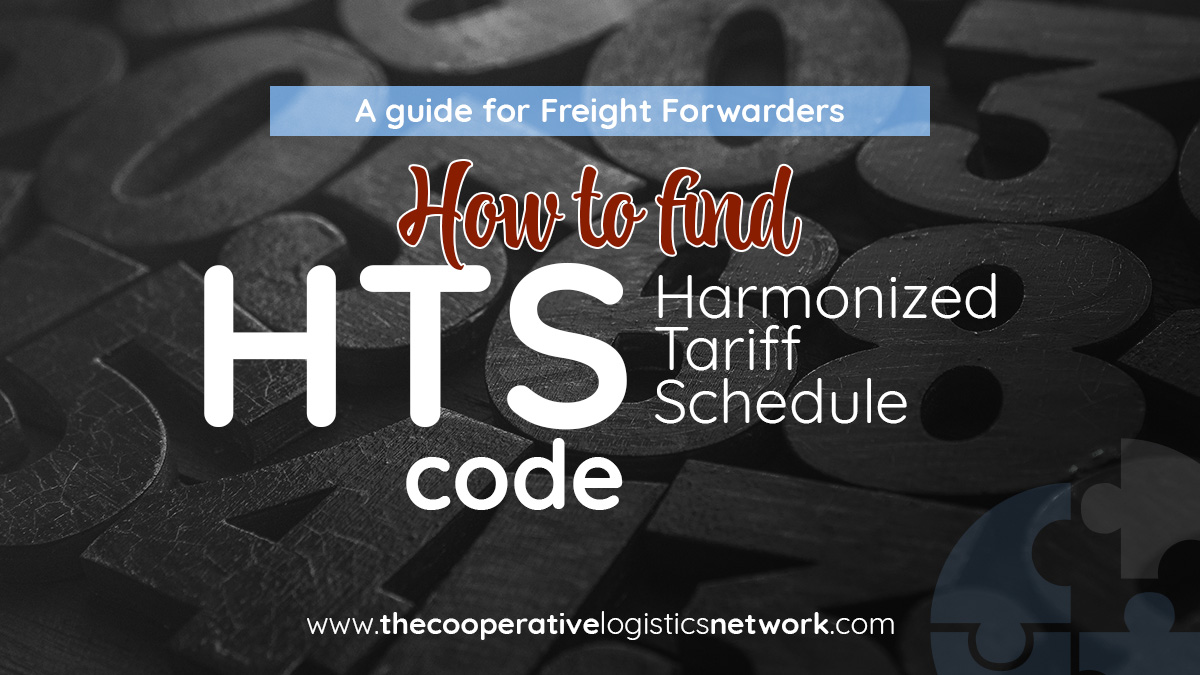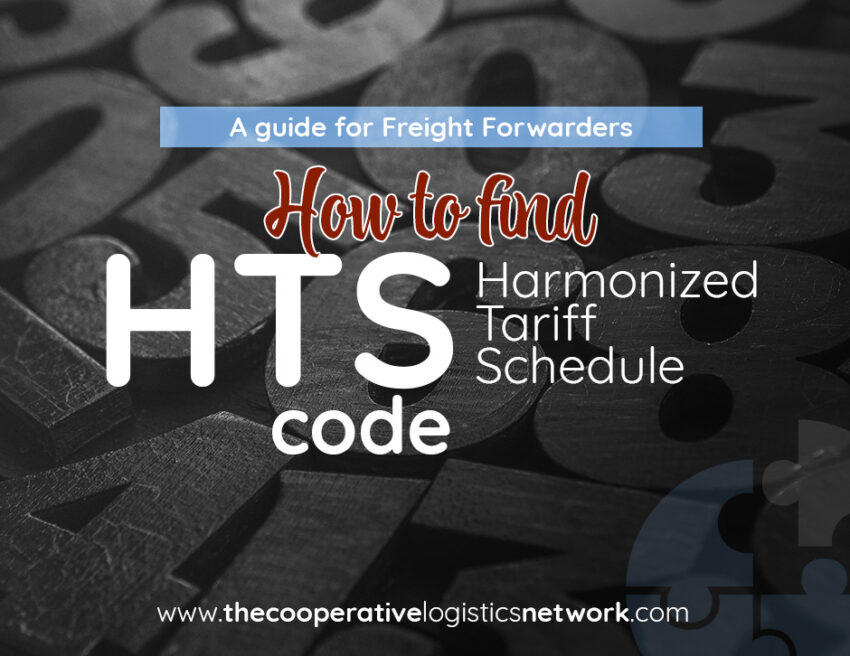Have you ever faced unexpected customs delays due to incorrect product classification? Do you struggle to determine the right duty rates for your shipments? Have you ever wondered how to efficiently find HTS code for your cargo? As a freight forwarder, navigating the Harmonized Tariff Schedule (HTS) code system is crucial for ensuring smooth international trade operations. The HTS code is a standardized numerical system used to classify goods for import and export, helping customs authorities determine duties, tariffs, and regulatory requirements. A misclassified shipment can lead to delays, penalties, or increased costs. This guide will provide freight forwarders with a comprehensive understanding of HTS codes, their importance, and best practices for accurate classification, helping you streamline your operations and avoid costly errors.

What is an HTS Code?
The Harmonized Tariff Schedule (HTS) is an internationally standardized system for classifying traded products. It is based on the Harmonized System (HS) developed by the World Customs Organization (WCO) and is used by over 200 countries worldwide.
Each HTS code consists of a 10-digit number:
- The first six digits are universal and follow the HS code.
- The last four digits are country-specific, allowing nations to impose distinct tariffs and regulations.
For example, a product classified under the HTS code 8703.21.00.00 refers to small-engine passenger vehicles. While the first six digits (8703.21) are internationally recognized, the last four digits may vary based on country-specific regulations.
Importance of HTS Codes for Freight Forwarders
1. Customs Clearance and Compliance
Customs authorities rely on HTS codes to determine import duties and taxes. Using an incorrect code may lead to shipment delays, fines, or even seizure of goods.
2. Accurate Duty and Tariff Calculation
HTS codes determine the tariff rate applicable to a product. Using the wrong code could result in overpayment or underpayment of duties, affecting a company’s bottom line.
3. Trade Agreements and Duty Benefits
Correct classification allows businesses to take advantage of free trade agreements (FTAs) and duty exemptions, reducing overall costs.
4. Avoiding Penalties and Audits
Regulatory authorities conduct audits to ensure proper classification. Consistently misclassifying shipments can lead to fines and legal consequences.
5. Facilitating Global Trade
HTS codes standardize product classification across countries, reducing discrepancies and simplifying the global trade process.
Understanding the HTS Code Structure
An HTS code follows a systematic structure:
- Chapter (2 digits): Broad product category (e.g., 87 for vehicles).
- Heading (4 digits): More specific category within the chapter (e.g., 8703 for passenger vehicles).
- Subheading (6 digits): Internationally recognized classification (e.g., 8703.21 for small-engine passenger vehicles).
- National Tariff Line (8-10 digits): Country-specific details (e.g., 8703.21.00.00 in the U.S.).
Example of an HTS Code Breakdown
For a hybrid electric passenger car:
- 87 – Vehicles
- 8703 – Motor cars and other motor vehicles
- 8703.40 – Vehicles with both electric and combustion engines
- 8703.40.00.00 – Country-specific classification
Understanding this structure helps freight forwarders find the correct HTS code and prevent errors in shipment classification.
Best Practices to Find HTS Code for Your Shipment
1. Use Official Resources
Refer to government customs websites or HTS databases to find the most accurate classification. The U.S. International Trade Commission (USITC) and the European Union TARIC system provide online tools for classification.
2. Analyze Product Specifications
HTS classification depends on a product’s material composition, function, and intended use. Freight forwarders should request detailed product descriptions from shippers to ensure accuracy.
3. Use Customs Rulings and Guidelines
Many customs authorities publish rulings and guidelines on product classifications. Reviewing past rulings can provide insights into how similar products are classified.
4. Consult with Experts
If unsure about a classification, seek guidance from customs brokers or trade compliance professionals who specialize in tariff codes.
5. Stay Updated on Changes
The WCO updates the HS system every five years, and individual countries may revise their HTS codes more frequently. Freight forwarders must stay informed to avoid outdated classifications.
6. Classify Goods Before Shipment
Pre-classifying goods before they are shipped reduces the risk of delays at customs. It also allows businesses to anticipate duty rates and compliance requirements in advance.
7. Keep Documentation and Records
Maintain records of all HTS classifications, customs rulings, and supporting documents for future reference. These records help in audits and dispute resolutions.
Common HTS Code Classification Challenges
1. Similar Products with Different Classifications
Certain products, such as electronics or textiles, have subtle differences that affect their classification. Carefully reviewing product features is essential.
2. Varying Interpretations Across Countries
Even though the first six digits of an HTS code are globally standardized, the last four digits may vary. Freight forwarders must ensure they use the correct national classification.
3. Unclear or Insufficient Product Descriptions
If a shipper provides vague product details, it becomes difficult to classify goods accurately. Freight forwarders should always request detailed descriptions and specifications.
4. Frequent HTS Code Updates
Changes in HTS codes mean that a previously valid classification might become obsolete. Staying updated with the latest revisions is crucial.
Tools for Finding HTS Codes
Freight forwarders can use the following resources to look up HTS codes:
- U.S. International Trade Commission (USITC) HTS Search Tool: https://hts.usitc.gov/
- European Union TARIC System: https://ec.europa.eu/taxation_customs/dds2/taric/taric_consultation.jsp
- World Customs Organization (WCO) HS Database: http://www.wcoomd.org/
- National Customs Websites: Each country has its own HTS code lookup tool.
Conclusion
For freight forwarders, mastering HTS codes is essential for ensuring smooth customs clearance, minimizing costs, and maintaining regulatory compliance. A well-classified shipment avoids penalties, benefits from trade agreements, and reaches its destination without unnecessary delays.
By using official resources, staying updated with regulations, and consulting with experts, freight forwarders can efficiently manage HTS code classification and enhance their global trade operations. Accurate classification is not just a compliance requirement—it is a strategic advantage in international logistics


